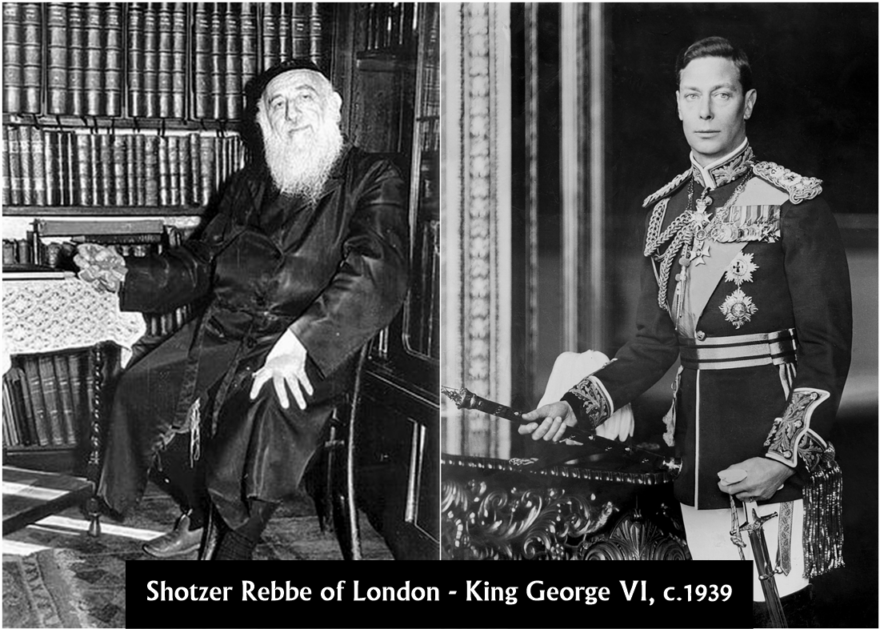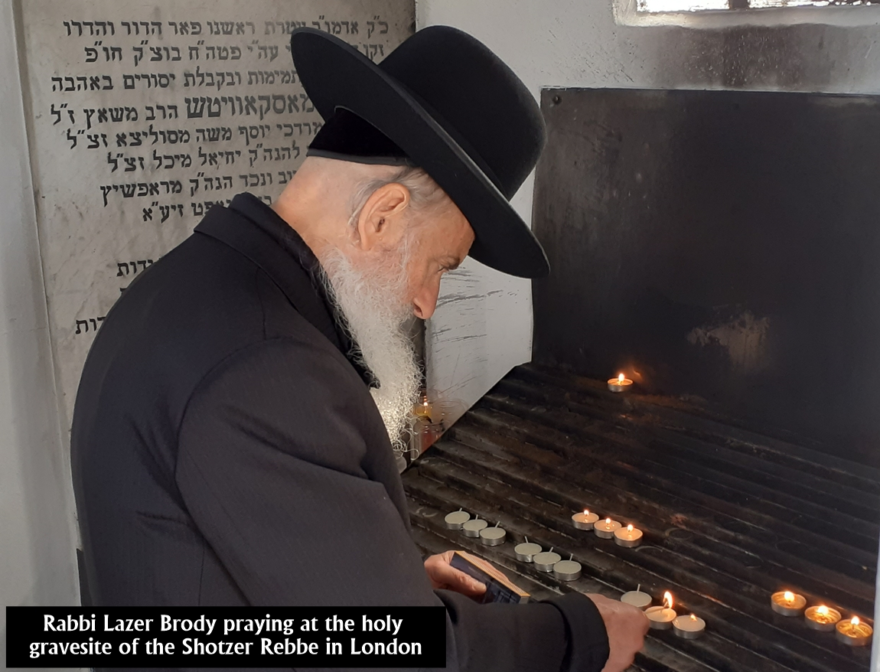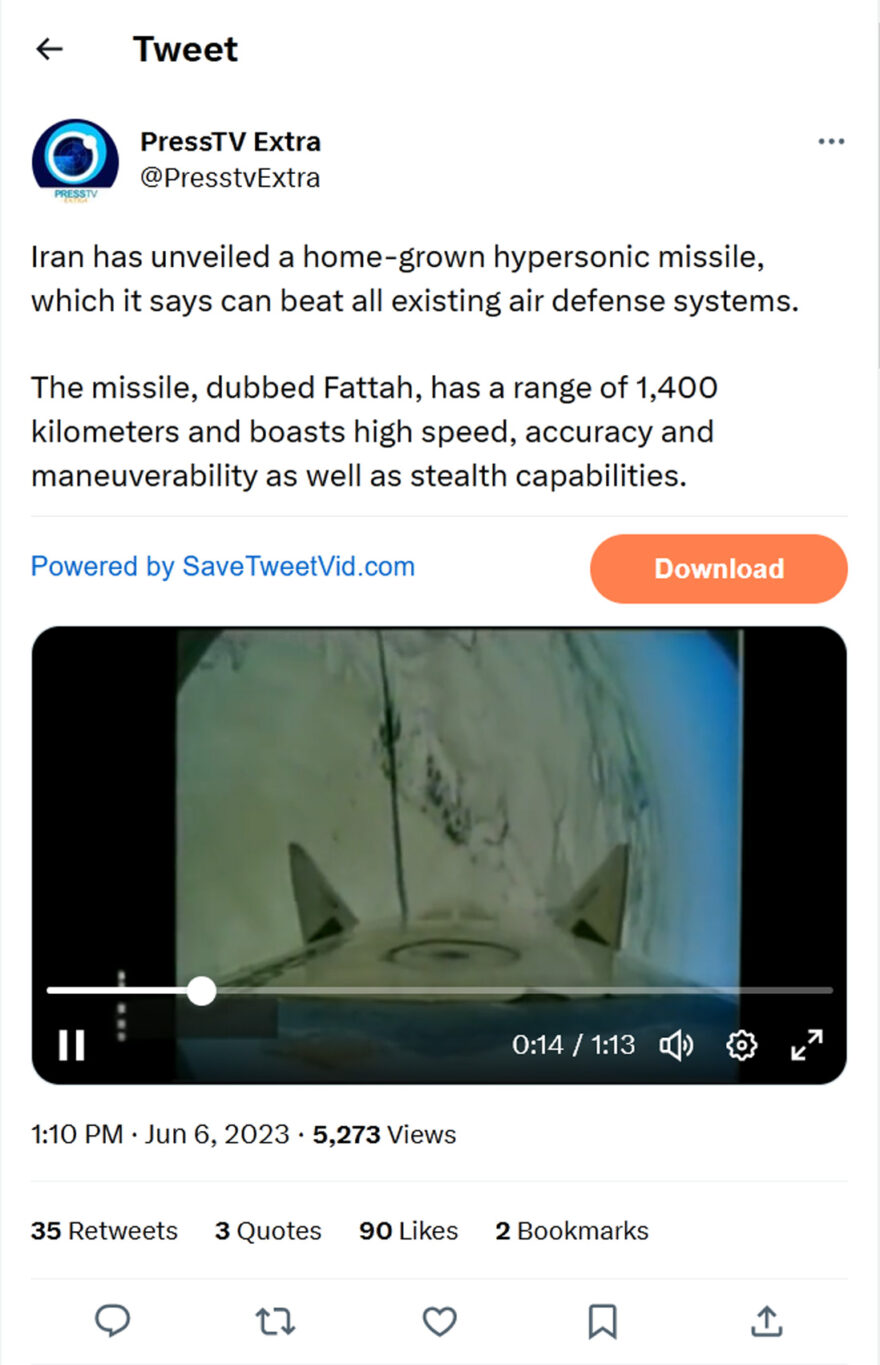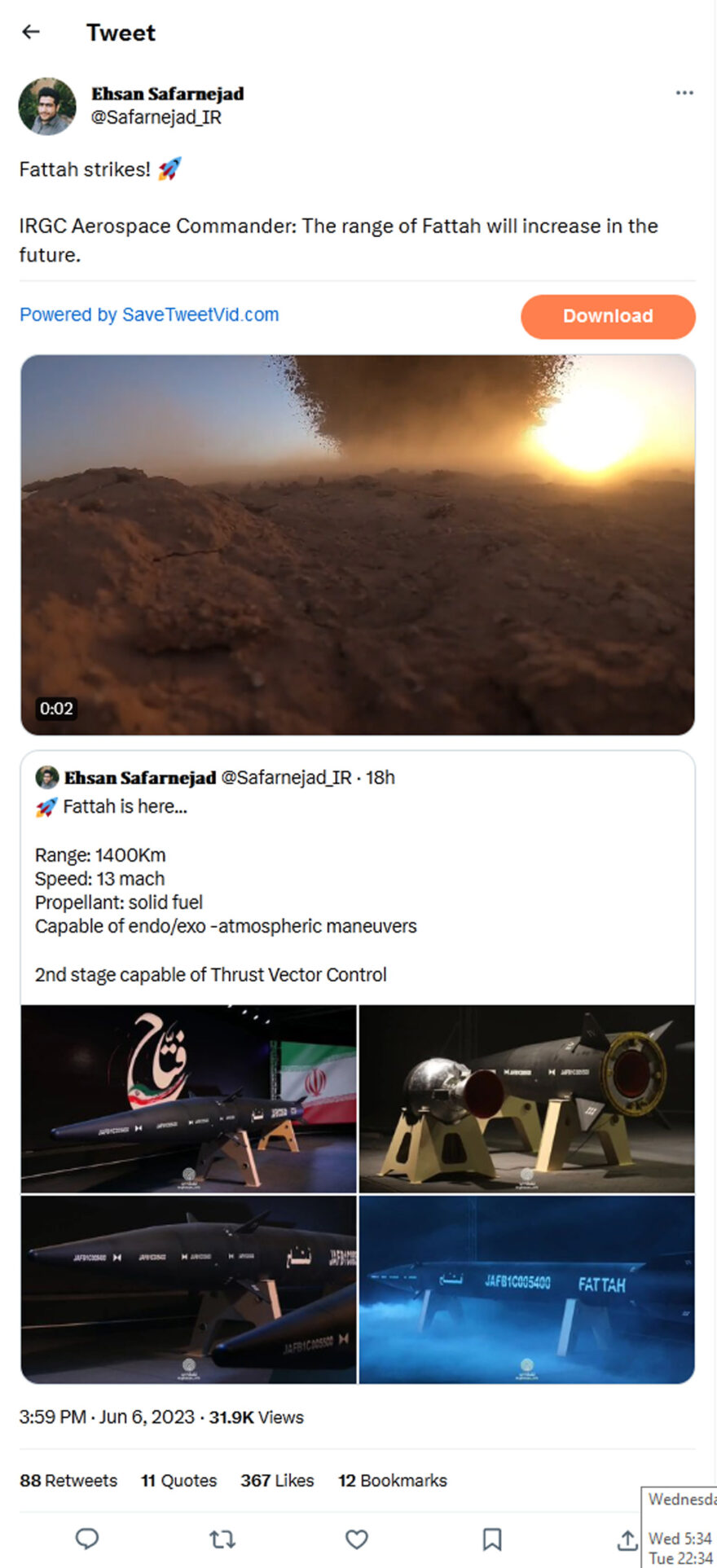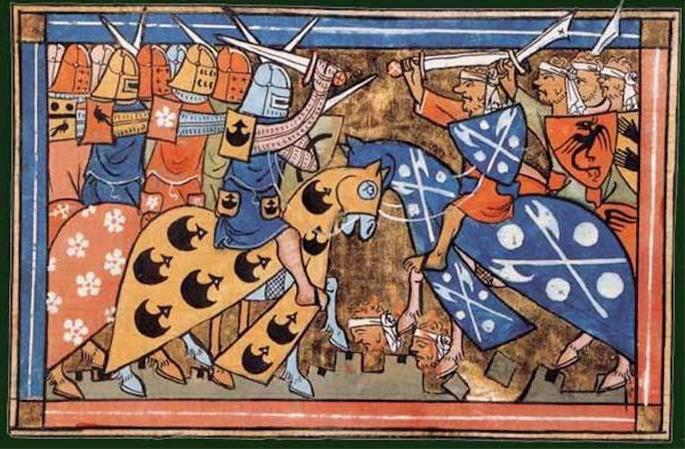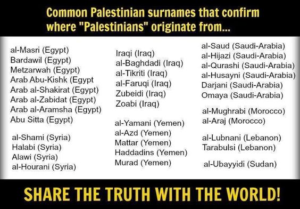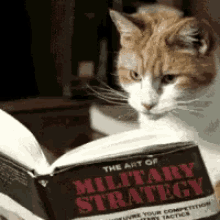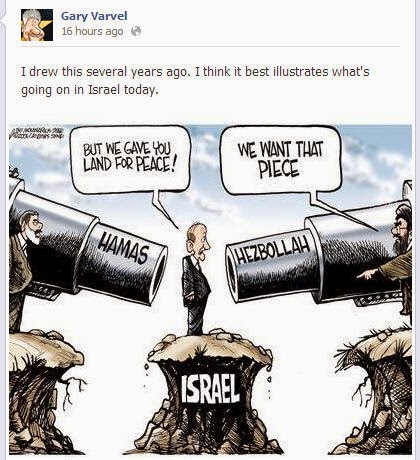|
|

The Blessing that Cured the Queen19September2022 by Lazer Brody https://lazerbeams.com/the-blessing-that-cured-the-queen/
Here is an amazing true story that few people are aware of. It’s also a secret that even fewer people knew. And, it’s the unforgettable account of when the Shotzer Rebbe of London met face-to-face with King George VI. This was the momentous meeting that saved the life of the future Queen Elizabeth. Epilepsy and the Royal FamilyEpilepsy was in the genes of the British royal family. Queen Elizabeth’s uncle Prince John, the youngest son of King George V, died at age 13 from a severe seizure. That was in 1918.
 Queen Elizabeth, age 9, with her grandparents King George V and Queen Mary on the balcony of buckingham Palace, 1935 Let’s fast-forward to 1939. Now, King George VI was deathly afraid that his 13-year-old daughter Elizabeth would meet the same fate as his brother Prince John. The KindertransportThat same year, the Jewish Agency was organizing the famous Kindertransport (German for “children’s transport”). This was the rescue effort of children from Nazi-controlled territory. It took place during the nine months prior to the outbreak of the World War II in September of 1939. The United Kingdom took in nearly 10,000 predominantly Jewish children from Germany, Austria, Czechoslovakia and Poland. This initiative encountered strong resistance from certain British circles.
The Chief Rabbi of England at the time was Rabbi Joseph Herman Hertz. He decided to intercede on behalf of the Kindertransport, so he visited King George VI together with the holy tzaddik, The Shotzer Rebbe of London, Grand Rabbi Shalom Moscowitz, osb”m. The Rebbe’s BlessingKing George VI never saw such an illuminated countenance as that of the Shotzer Rebbe. He asked for a blessing for his daughter, who was 13 at the time, and suffering from epileptic seizures. “Please, might the Rebbe pray that my daughter will live.”
The Rebbe answered unequivocally, “If Your Majesty will assure that the Kindertransport is approved, and thereby save Jewish children, then undoubtedly measure for measure, the princess will not only live, but her ailment will disappear altogether.”
The King was deeply moved. The Kindertransport began immediately and the princess – later to be Queen Elizabeth II who passed away at the ripe old age of 96 on September 8, 2022 – was miraculously cured immediately.
Rabbi Lazer Brody’s teacher and spiritual guide, Grand Rabbi Naftali Moscowitz shlit’a, aka the “Melitzer Rebbe of Ashdod,” is the grandson of The Shotzer Rebbe of London, Grand Rabbi Shalom Moscowitz, osb”m. Recently, Rabbi Lazer visited the holy gravesite of the Shotzer Rebbe at the Adath Yisroel Cemetery in Enfield, outside of London, and prayed for all of our readers, subscribers and supporters.
|
|

Soviet’s Anti-Semitic Operation SIGBob Ryan 15December2022, https://blogs.timesofisrael.com/soviets-anti-semitic-operation-sig/
Operation SIG was the KGB’s operation to use lies, which the Soviets referred to as disinformation to target Muslims with hatred of Jews and Israel throughout the world. The propaganda was intended to increase terroristic attacks against both using similar means as the Nazi’s. SIG was short for the Russian being translated to Jewish, Zionist Government.
In 2019, Informing Science released, THE KGB’S OPERATION SIG: A 50-YEAR CAMPAIGN TO INCITE HATRED OF ISRAEL AND JEWS. It has numerous pages of citations explaining how Operation SIG continues to impact the world through the misinformation campaign, which is the purposeful spread of false information, including fabricated history. Just about every false notion anti-Semites have about Israel and the Jewish people today, including the belief of Israel being an apartheid state, originated with Operation SIG.
From the section, Inventing a new narrative, Claiming Jews as the aggressor, of the paper:
“In 1948 the fledgling democratic State of Israel was attacked by five Arab armies bent on its destruction. This reality did not support the ambitions of the USSR, and so the KGB created a replacement narrative of Israel as the aggressor. That new narrative started by talking about the Arabs of the region as a distinct people, the Palestinians, even though these Arabs failed to meet the commonly held criteria of peoplehood. Peoplehood typically is understood as having distinctness in language, religion, history, culture, historical sovereignty, national literature, and such. For example, the Kurds, Armenians, Catalonians, Bangladeshis, Slovakians, Slovenes, and Jews are peoples. The uniqueness of Arab Palestinians needed to be constructed whole cloth but was and is essential to claim the land of Israel as the homeland for Arab Palestinians. “Historically, the Palestinian ‘desire for statehood’ and ‘need for liberation’ was invented in large part by the Soviet Union” according to Christopher Fish writing in the Stanford Review (2008). He writes “Palestinian nationalism is, therefore, a historical fabrication born out of a communist thirst for expansion and an Arab resentment of the existence of Israel.”
The Soviets were opposed to all democracies, including Israel. Creating the false narrative of Palestinian nationalism purposely resulted in terrorist attacks against Israel, and violent attacks against Jews throughout the world.
Lt. Gen. Ion Pacepa, former deputy chief of Romanian intelligence service was directly involved in Operation SIG. He was one of the highest-ranking Soviets to ever defect.
From 2013, Tablet Magazine, Former Soviet Spy Sees the Long Arm of the KG in Today’s Muslim Anti-Semitism, stated:
“By 1978, when Pacepa left Romania for good, the KGB had dispatched 500 undercover agents to target Islamic countries, he writes. Most of them were engineers, medical doctors, teachers, and art instructors. They were part of a Soviet force Pacepa estimates at 4,000, whose job was to spread anti-Semitic and anti-Western hate. The KGB, he writes, distributed several hundred thousand copies of the Protocols in Arabic via these agents and others.”
The Protocols referred to are the debunked, Protocols of the Elders of Zion. Just like other anti-Jewish propaganda campaigns of the past, the truth had no bearing on the purposeful lies told to bring about hatred of the Jewish people.
Every vile lie embraced by anti-Semites about Israel and the whole of the Jewish people can be traced back to Operations SIG. It is important to counter the hatred started by the Soviets with the truth.
Propaganda, no matter how effective, can never rewrite history.
|
|

The US forced Israel out of Gaza and Northern Shomron in 2005The rabbi who knew the real reason for Arik Sharon’s “Disengagement”Reflections on the passing of Rabbi Shaar-Yashuv HaKohen zt”l: The Rabbi who heard the real reason Arik Sharon retreated from Gaza and expelled the Jewish communities from Katif and Northern Shomron.David Bedein, 06/09/16 http://www.israelnationalnews.com/Articles/Article.aspx/19442 The death of the Chief Rabbi Emeritus of Haifa, Rabbi Shaar-Yashuv Cohen, brings to mind the most stirring episodes in the history of the modern State of Israel.
Rav Shaar-Yashuv Cohen, wounded in the battle for the Old City in Jerusalem, was the last Jewish civilian who left the Old City as it fell, carried on a stretcher into captivity…And Rav Shaar-Yashuv Cohen, who served as the deputy Mayor of Jerusalem in 1967, was given the honor of being the first civilian allowed to enter the Old City in Jerusalem at the time of its liberation during the six day war.
Yet there is yet another mission to Jerusalem which was little known.
In August, 2005, Rabbi Shaar-Yashuv Cohen traveled to Jerusalem to attempt a last minute plea for then Prime Minister Ariiel (Arik) Sharon to reconsider his plan to retreat from Gush Katif, which involved Israel’s obliteration of the 21 Jewish communities there, including 325 thriving Jewish farms and 86 synagogues and Jewish study centers. Rav Shaar-Yashuv Cohen told me at the time that the rapport between Arik Sharon and himself had lasted since his days of captivity in the 1948 war and that Rav Shaar-Yashuv was the only Rabbi who was ready to speak with him at the time.
Sharon gave a clear answer to the rabbi: “This is what the US is demanding that I do and I must do it.”
It did not matter that half of the 9,000 Jews who live in Gush Katif had nowhere to go, and that their relocation plans were still up in the air.
It did not matter that the Israeli government cannot offer more than two containers to each family to help them remove their possessions.
It did not seem to matter that the experts in Israel’s security establishment are warning that the result of Israel’s hasty retreat will be the creation of a new Islamic terror base.
Rav Shaar-Yashuv Cohen heard Sharon making it clear that he was under pressure from the US government and that is that, and that the myth of an autonomous Israeli policy in this regard had nothing to do with reality.
Indeed, one of the common assumptions was that the Sharon government’s plan to expel Jews from Gaza and northern Samaria, and unilaterally hand the area over to an independent Palestinian entity, had been an entirely autonomous Israeli decision.
But the US government was behind it all along.
In meetings with concerned American citizens, Danny Ayalon, Israeli ambassador to the US at the time, clearly stated that Sharon’s Retreat Plan was part of an overall Israeli-American agreement.
In late June, 2005, Ayalon met with representatives of the Orthodox Union, one of the largest contingents of American Orthodox Jews, and told them clearly that “Prime Minister Sharon is left with no choice. He is doing exactly what the US expects him to do.”
In an interview with the Jewish Journal of Greater Los Angeles, published on June 22nd, 2005, Ayalon reversed earlier Israeli government statements, saying that Israel does not expect the Palestinian Authority (PA) to dismantle terrorist infrastructure until after the planned expulsion. He mentioned that ending terrorism and anti-Israel incitement had been conditions Israel had demanded from the PA before carrying out the plan; however, Ayalon indicated that the agreement with the US was more important than an agreement with the PA.
The Israeli ambassador said, “Disengagement has to be viewed in the context of Israel-United States relations…. This pullout did not follow an agreement with the Palestinians, but it followed something which is much more important, an agreement with the United States. Disengagement is something that creates a common agenda between us and the United States.”
In the final interview given by Benyamin Netanyahu before his resignation from the Sharon government, he indicated that the current policy pursued by the government of Israel should be perceived as a threat to the security interests of the US and of all Western countries, since it created a terror base in Gaza, and since the Palestinian Authority incorporated the Hamas and other Palestinian terrorist organizations instead of dismantling them.
Yet, the directive of the US State Department remained unaltered: Prime Minister Ariel Sharon must dismantle and withdraw any and all Israeli presence from every Jewish community in the Katif district of Gaza by mid-August.
When Israel did go ahead with the retreat of the IDF and the expulsion of the Jewish communities from Katif and the Northern Shomron, Rav Shaar-Yashuv Cohen told me that he wanted to tell the world that this policy was implemented as a the result of a clear dictate to Arik Sharon issued by the government of the United States. This was not meant as rationalization for Sharon’s policy.
Few people want to hear the warnings of Rav Shaar-Yashuv Cohen that Israeli policy is often dictated from Washington. |
|

Rav Yehuda Zev Leibowitz’s Third Prediction
Don’t forget that the inclement weather, as well as the inclement political climate, all come from Hashem and for a reason. Be patient, I’m getting to the point. But first, I must preface and ask a question: Why are we so happy on Passover Seder night? Any 7-year-old will laugh and say, “What a dumb question! That’s when Hashem took us out of slavery in Egypt!”
Is it such a dumb question when I show little 7-year-old Chaimk’e and his parents that in the three days that preceded our Exodus from Egypt in the Hebrew year of 2448 (1282 BCE), eight million Jews died, and that’s according to the conservative figure. Some say it was 10 million. Rashi explains that only 1 out of 5 Jews left Egypt in the Exodus; the other 4 died during the three days of darkness. Since a minimum of 2 million left, that means that at least 8 million perished!
Why, therefore, do we not mourn during the three days that precede Pesach, and declare them as national Holocaust Days, when 33% more Jews died than during the entire six years of the Nazi Holocaust? Not only do we not mourn, we rejoice! What’s going on?
Our sages rule that we do not mourn anyone who denies the Redemption and refuses to be a part of it, just as we don’t mourn a heretic who denies the veracity of Moses’s prophecy and the Torah (Rambam, Laws of Teshuva, 3:8, and other places). This notion is even anchored in The Code of Jewish Law (see Shulchan Oruch, Yora Deah 345:5; Mishna Berura on Orach Chaim 126:1, letter b). Moses, in the Name of Hashem, told the Children of Israel to arise, we must quickly leave Egypt. 80% didn’t listen to him. They paid a steep price but we don’t mourn for them. They had become used to Egypt and had no desire – despite what Hashem wanted – to leave Egypt. Even though they were slaves, they liked the Egyptian culture, music, pastimes and food. Moses said no, we must go to our Promised Land. Egypt is not our home.
Moses’s voice saying, “We must go to our Promised Land”, echoes through all of our history.
The periodic “Golden Ages” of our Diaspora have always been followed by calamity. The Golden Age of Jewry in the Iberian Peninsula culminated in 1492, when the horrendous Inquisition began. Jews were either killed, exiled or forcefully converted to Catholicism. The Golden Age of German and Eastern European Jewry ended in Hitler’s Holocaust.
There is only one, true Golden Age in Judaism, and that’s when our exiles return home, Moshiach comes and our Holy Temple is rebuilt.
Hashem wants to redeem His people but in the meanwhile, He won’t until they come home. The sand of that “meanwhile” keeps is emptying out from the top of that 2,000 year hourglass. When a certain date comes according to Hashem’s timeline, He won’t wait anymore and Moshiach will come whether we like it or not or whether we’re here in Israel or not.
Rav Yehuda Zev, of saintly and blessed memory, lived through the Nazi Holocaust. He witnessed the slaughter of his parents, his siblings and his fiance. He never had children because of the torture that the satanic Nazis did to his body. He did not take the word “Holocaust” lightly – he lived through it and experienced it on his own flesh and in his own heart in the most excruciatingly painful way. Though scarred, completely, inside and out, he was a tzaddik of perfect emuna and not bitter in the slightest. He knew that everything was from Hashem. Yet, with all his heart, he did everything to prevent another Holocaust. He didn’t want Moshiach to come if the price would be tragic.
A tzaddik of Rav Yehuda Zev’s caliber has 20/20 spiritual vision because nothing in this world can fool, sway or tempt him. No wonder he was so accurate in predicting the Arab Spring See Below and Bibi’s inability to attack Iran as we wrote on our No Go post from this past Friday. See Below
A movie clip has now become public, where Rabbi Aharon Stern shlit’a from Bnai Brak, who was Rabbi Yehuda Zev’s personal attendant, reveals the tzaddik’s third prediction and says: “Before his death, Rav Leibowitz told me that the anti-Semitism in the United States is only going to continue to grow, until it gets to the point where the Jews will be forced to flee. They must come to Israel soon; if they wait too long, they’ll be lucky to exit with the shirt on their backs…come soon, the Redemption will be here in the Land of Israel, not anywhere else.” In case anyone doubts the veracity and authenticity of the quote, at the bottom of this post is the vid in Hebrew where you can see Rav Stern saying this (see minutes 2:48-3:40).
Hashem wants to redeem us, so He wants us all here. But what about those who for any number of reasons can’t come now? What about those with joint custody on children from a previous marriage or those with an elderly parent? (Plug in your own reason…)
Rav Shalom Arush shlit’a says that even if you can’t come now, you can do 2 things: 1) Pray daily for Aliya, so that you too can come home to the Land of Israel; 2) Spread emuna far and wide, in any way you can. This will protect you in the meanwhile, because the spread of emuna is also needed to expedite Geula, the full redemption of our people, speedily and in our days, amen! ביבי בוקר טוב – הרב אהרון שטרן שליט”א
|
|
Is the United States the cause of Arab Spring?True face of “second CIA” gradually exposedSource: China Military Online Editor: Li Weichao, 2022-05-10 17:25:27 By Chen Yang The Chinese Ministry of Foreign Affairs released the Fact Sheet on the National Endowment for Democracy on May 7, which aroused widespread public concern. The Fact Sheet has exposed the “painted skin” of the National Endowment for Democracy (NED) with a large amount of detailed information and allows the world to clearly see the true face of the “second CIA” of the US. Under the guise of “promoting democracy”, NED subverts the legitimate governments of other countries and fosters pro-US puppet forces by instigating color revolutions, colluding with local political groups, funding separatist forces and fabricating disinformation. It is essentially a “white glove” of the US government.
Established in 1983, NED is nominally an NGO that provides support for democracy abroad, but in fact, it relies on continuous financial support from the White House and the US Congress and takes orders from the US government. As early as 1991, the founder of NED Alan Weinstein put it bluntly in an interview with the Washington Post that a lot of what they were doing was what the CIA had done 25 years ago. NED was therefore known globally as the “second CIA”.
NED instigates color revolutions to subvert state power. According to the Fact Sheet, NED was seen behind color revolutions instigated and orchestrated by the US, including the disintegration of the Soviet Union, the Rose Revolution in Georgia, the Orange Revolution in Ukraine, and the Arab Spring. During the Orange Revolution in Ukraine, the US offered USD65 million to the Ukrainian opposition through NED and other organizations. When massive anti-government demonstrations broke out in Ukraine in 2013, NED funded as many as 65 NGOs in the country, and even provided large funds to pay “wages” to each and every protester
RIA Novosti reported that NED had invested USD14 million in Ukraine projects which led to the large demonstrations in 2014 that overthrew the then Yanukovych government. “The CIA used to go around behind the scenes and provide funding to influence the political process, and now they have a new organization, the National Endowment for Democracy,” said Philip Agee, a former Central Intelligence Agency officer, in an interview.
NED colludes with local political groups to meddle in other countries’ political agendas. The Fact Sheet points out that by infiltrating target countries, cultivating local anti-government forces and stoking social tensions, NED has been reaching its hands into the internal affairs of other countries.NED has repeatedly meddled in Hong Kong’s elections and interfered with China’s internal affairs. NED also interfered in Russia’s elections and threatened Russia’s constitutional, defense and national security.
Max Blumenthal, the founder of the Grayzone website, which has been engaged in NED investigation and reporting for a long time, said in an interview that the people who run NED have neoconservative thinking. They believe that the US should be the world’s only hegemonic and dominant power and it should not be challenged by any other regime. So it targets socialist governments, independent governments that are not afraid of American influence, and so-called competitors such as Russia and China.
NED funds activities and academic programs for the purpose of ideological infiltration.NED is the big financier of dissidents in some countries and regions. Since 1991, NED has been granting the Democracy Award annually to political activists and dissidents in countries including Russia, China, DPRK, Myanmar, Iran, Cuba, Venezuela and Ukraine in recognition of “defending human rights and democracy”, so as to encourage those dissidents in other countries to help the US “export” democracy. In June 2011, the then US Ambassador to Egypt Anne Patterson acknowledged that the US had spent no less than USD 40 million to “promote democracy” in Egypt since February 2011. From these moves, it is not difficult to see that although NED is holding the banner of so-called “academic” and “democracy”, it is engaged in extremely disgraceful activities such as the infiltration of values all over the world.
For a long time, the US has imposed its own political system and values on others, implemented “democratic transformation”, indiscriminately imposed unilateral sanctions, instigated color revolutions, and caused disastrous consequences. The US has owed blood debts for “exporting democracy”, and its so-called “democracy” has long become a “weapon of mass destruction” to interfere in other countries’ affairs. |
|

The RedirectionIs the Administration’s new policy benefitting our enemies in the war on terrorism?By Seymour M. Hersh 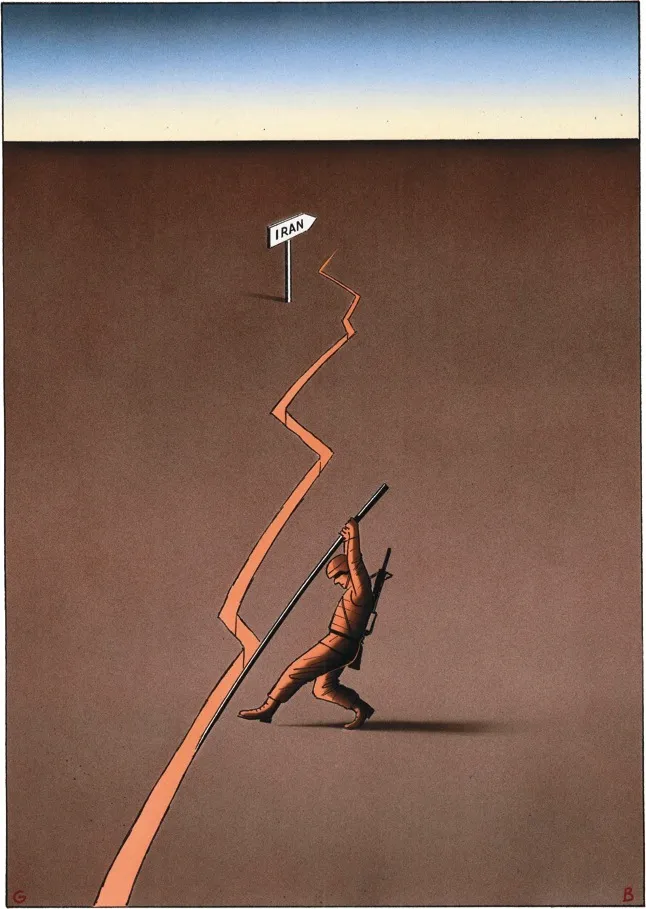 Efforts to curb Iran’s influence have involved the United States in worsening Sunni-Shiite tensions. GUY BILLOUT A STRATEGIC SHIFT
In the past few months, as the situation in Iraq has deteriorated, the Bush Administration, in both its public diplomacy and its covert operations, has significantly shifted its Middle East strategy. The “redirection,” as some inside the White House have called the new strategy, has brought the United States closer to an open confrontation with Iran and, in parts of the region, propelled it into a widening sectarian conflict between Shiite and Sunni Muslims.
To undermine Iran, which is predominantly Shiite, the Bush Administration has decided, in effect, to reconfigure its priorities in the Middle East. In Lebanon, the Administration has coöperated with Saudi Arabia’s government, which is Sunni, in clandestine operations that are intended to weaken Hezbollah, the Shiite organization that is backed by Iran. The U.S. has also taken part in clandestine operations aimed at Iran and its ally Syria. A by-product of these activities has been the bolstering of Sunni extremist groups that espouse a militant vision of Islam and are hostile to America and sympathetic to Al Qaeda.
One contradictory aspect of the new strategy is that, in Iraq, most of the insurgent violence directed at the American military has come from Sunni forces, and not from Shiites. But, from the Administration’s perspective, the most profound—and unintended—strategic consequence of the Iraq war is the empowerment of Iran. Its President, Mahmoud Ahmadinejad, has made defiant pronouncements about the destruction of Israel and his country’s right to pursue its nuclear program, and last week its supreme religious leader, Ayatollah Ali Khamenei, said on state television that “realities in the region show that the arrogant front, headed by the U.S. and its allies, will be the principal loser in the region.”
After the revolution of 1979 brought a religious government to power, the United States broke with Iran and cultivated closer relations with the leaders of Sunni Arab states such as Jordan, Egypt, and Saudi Arabia. That calculation became more complex after the September 11th attacks, especially with regard to the Saudis. Al Qaeda is Sunni, and many of its operatives came from extremist religious circles inside Saudi Arabia. Before the invasion of Iraq, in 2003, Administration officials, influenced by neoconservative ideologues, assumed that a Shiite government there could provide a pro-American balance to Sunni extremists, since Iraq’s Shiite majority had been oppressed under Saddam Hussein. They ignored warnings from the intelligence community about the ties between Iraqi Shiite leaders and Iran, where some had lived in exile for years. Now, to the distress of the White House, Iran has forged a close relationship with the Shiite-dominated government of Prime Minister Nuri al-Maliki.
The new American policy, in its broad outlines, has been discussed publicly. In testimony before the Senate Foreign Relations Committee in January, Secretary of State Condoleezza Rice said that there is “a new strategic alignment in the Middle East,” separating “reformers” and “extremists”; she pointed to the Sunni states as centers of moderation, and said that Iran, Syria, and Hezbollah were “on the other side of that divide.” (Syria’s Sunni majority is dominated by the Alawi sect.) Iran and Syria, she said, “have made their choice and their choice is to destabilize.”
Some of the core tactics of the redirection are not public, however. The clandestine operations have been kept secret, in some cases, by leaving the execution or the funding to the Saudis, or by finding other ways to work around the normal congressional appropriations process, current and former officials close to the Administration said.
A senior member of the House Appropriations Committee told me that he had heard about the new strategy, but felt that he and his colleagues had not been adequately briefed. “We haven’t got any of this,” he said. “We ask for anything going on, and they say there’s nothing. And when we ask specific questions they say, ‘We’re going to get back to you.’ It’s so frustrating.”
The key players behind the redirection are Vice-President Dick Cheney, the deputy national-security adviser Elliott Abrams, the departing Ambassador to Iraq (and nominee for United Nations Ambassador), Zalmay Khalilzad, and Prince Bandar bin Sultan, the Saudi national-security adviser. While Rice has been deeply involved in shaping the public policy, former and current officials said that the clandestine side has been guided by Cheney. (Cheney’s office and the White House declined to comment for this story; the Pentagon did not respond to specific queries but said, “The United States is not planning to go to war with Iran.”)
The policy shift has brought Saudi Arabia and Israel into a new strategic embrace, largely because both countries see Iran as an existential threat. They have been involved in direct talks, and the Saudis, who believe that greater stability in Israel and Palestine will give Iran less leverage in the region, have become more involved in Arab-Israeli negotiations.
The new strategy “is a major shift in American policy—it’s a sea change,” a U.S. government consultant with close ties to Israel said. The Sunni states “were petrified of a Shiite resurgence, and there was growing resentment with our gambling on the moderate Shiites in Iraq,” he said. “We cannot reverse the Shiite gain in Iraq, but we can contain it.”
“It seems there has been a debate inside the government over what’s the biggest danger—Iran or Sunni radicals,” Vali Nasr, a senior fellow at the Council on Foreign Relations, who has written widely on Shiites, Iran, and Iraq, told me. “The Saudis and some in the Administration have been arguing that the biggest threat is Iran and the Sunni radicals are the lesser enemies. This is a victory for the Saudi line.”
Martin Indyk, a senior State Department official in the Clinton Administration who also served as Ambassador to Israel, said that “the Middle East is heading into a serious Sunni-Shiite Cold War.” Indyk, who is the director of the Saban Center for Middle East Policy at the Brookings Institution, added that, in his opinion, it was not clear whether the White House was fully aware of the strategic implications of its new policy. “The White House is not just doubling the bet in Iraq,” he said. “It’s doubling the bet across the region. This could get very complicated. Everything is upside down.”
The Administration’s new policy for containing Iran seems to complicate its strategy for winning the war in Iraq. Patrick Clawson, an expert on Iran and the deputy director for research at the Washington Institute for Near East Policy, argued, however, that closer ties between the United States and moderate or even radical Sunnis could put “fear” into the government of Prime Minister Maliki and “make him worry that the Sunnis could actually win” the civil war there. Clawson said that this might give Maliki an incentive to coöperate with the United States in suppressing radical Shiite militias, such as Moqtada al-Sadr’s Mahdi Army.
Even so, for the moment, the U.S. remains dependent on the coöperation of Iraqi Shiite leaders. The Mahdi Army may be openly hostile to American interests, but other Shiite militias are counted as U.S. allies. Both Moqtada al-Sadr and the White House back Maliki. A memorandum written late last year by Stephen Hadley, the national-security adviser, suggested that the Administration try to separate Maliki from his more radical Shiite allies by building his base among moderate Sunnis and Kurds, but so far the trends have been in the opposite direction. As the Iraqi Army continues to founder in its confrontations with insurgents, the power of the Shiite militias has steadily increased.
Flynt Leverett, a former Bush Administration National Security Council official, told me that “there is nothing coincidental or ironic” about the new strategy with regard to Iraq. “The Administration is trying to make a case that Iran is more dangerous and more provocative than the Sunni insurgents to American interests in Iraq, when—if you look at the actual casualty numbers—the punishment inflicted on America by the Sunnis is greater by an order of magnitude,” Leverett said. “This is all part of the campaign of provocative steps to increase the pressure on Iran. The idea is that at some point the Iranians will respond and then the Administration will have an open door to strike at them.”
President George W. Bush, in a speech on January 10th, partially spelled out this approach. “These two regimes”—Iran and Syria—“are allowing terrorists and insurgents to use their territory to move in and out of Iraq,” Bush said. “Iran is providing material support for attacks on American troops. We will disrupt the attacks on our forces. We’ll interrupt the flow of support from Iran and Syria. And we will seek out and destroy the networks providing advanced weaponry and training to our enemies in Iraq.”
In the following weeks, there was a wave of allegations from the Administration about Iranian involvement in the Iraq war. On February 11th, reporters were shown sophisticated explosive devices, captured in Iraq, that the Administration claimed had come from Iran. The Administration’s message was, in essence, that the bleak situation in Iraq was the result not of its own failures of planning and execution but of Iran’s interference.
The U.S. military also has arrested and interrogated hundreds of Iranians in Iraq. “The word went out last August for the military to snatch as many Iranians in Iraq as they can,” a former senior intelligence official said. “They had five hundred locked up at one time. We’re working these guys and getting information from them. The White House goal is to build a case that the Iranians have been fomenting the insurgency and they’ve been doing it all along—that Iran is, in fact, supporting the killing of Americans.” The Pentagon consultant confirmed that hundreds of Iranians have been captured by American forces in recent months. But he told me that that total includes many Iranian humanitarian and aid workers who “get scooped up and released in a short time,” after they have been interrogated.
“We are not planning for a war with Iran,” Robert Gates, the new Defense Secretary, announced on February 2nd, and yet the atmosphere of confrontation has deepened. According to current and former American intelligence and military officials, secret operations in Lebanon have been accompanied by clandestine operations targeting Iran. American military and special-operations teams have escalated their activities in Iran to gather intelligence and, according to a Pentagon consultant on terrorism and the former senior intelligence official, have also crossed the border in pursuit of Iranian operatives from Iraq.
At Rice’s Senate appearance in January, Democratic Senator Joseph Biden, of Delaware, pointedly asked her whether the U.S. planned to cross the Iranian or the Syrian border in the course of a pursuit. “Obviously, the President isn’t going to rule anything out to protect our troops, but the plan is to take down these networks in Iraq,” Rice said, adding, “I do think that everyone will understand that—the American people and I assume the Congress expect the President to do what is necessary to protect our forces.”
The ambiguity of Rice’s reply prompted a response from Nebraska Senator Chuck Hagel, a Republican, who has been critical of the Administration:
The Administration’s concern about Iran’s role in Iraq is coupled with its long-standing alarm over Iran’s nuclear program. On Fox News on January 14th, Cheney warned of the possibility, in a few years, “of a nuclear-armed Iran, astride the world’s supply of oil, able to affect adversely the global economy, prepared to use terrorist organizations and/or their nuclear weapons to threaten their neighbors and others around the world.” He also said, “If you go and talk with the Gulf states or if you talk with the Saudis or if you talk with the Israelis or the Jordanians, the entire region is worried. . . . The threat Iran represents is growing.”
The Administration is now examining a wave of new intelligence on Iran’s weapons programs. Current and former American officials told me that the intelligence, which came from Israeli agents operating in Iran, includes a claim that Iran has developed a three-stage solid-fuelled intercontinental missile capable of delivering several small warheads—each with limited accuracy—inside Europe. The validity of this human intelligence is still being debated.
A similar argument about an imminent threat posed by weapons of mass destruction—and questions about the intelligence used to make that case—formed the prelude to the invasion of Iraq. Many in Congress have greeted the claims about Iran with wariness; in the Senate on February 14th, Hillary Clinton said, “We have all learned lessons from the conflict in Iraq, and we have to apply those lessons to any allegations that are being raised about Iran. Because, Mr. President, what we are hearing has too familiar a ring and we must be on guard that we never again make decisions on the basis of intelligence that turns out to be faulty.”
Still, the Pentagon is continuing intensive planning for a possible bombing attack on Iran, a process that began last year, at the direction of the President. In recent months, the former intelligence official told me, a special planning group has been established in the offices of the Joint Chiefs of Staff, charged with creating a contingency bombing plan for Iran that can be implemented, upon orders from the President, within twenty-four hours.
In the past month, I was told by an Air Force adviser on targeting and the Pentagon consultant on terrorism, the Iran planning group has been handed a new assignment: to identify targets in Iran that may be involved in supplying or aiding militants in Iraq. Previously, the focus had been on the destruction of Iran’s nuclear facilities and possible regime change.
Two carrier strike groups—the Eisenhower and the Stennis—are now in the Arabian Sea. One plan is for them to be relieved early in the spring, but there is worry within the military that they may be ordered to stay in the area after the new carriers arrive, according to several sources. (Among other concerns, war games have shown that the carriers could be vulnerable to swarming tactics involving large numbers of small boats, a technique that the Iranians have practiced in the past; carriers have limited maneuverability in the narrow Strait of Hormuz, off Iran’s southern coast.) The former senior intelligence official said that the current contingency plans allow for an attack order this spring. He added, however, that senior officers on the Joint Chiefs were counting on the White House’s not being “foolish enough to do this in the face of Iraq, and the problems it would give the Republicans in 2008.”
PRINCE BANDAR’S GAME
The Administration’s effort to diminish Iranian authority in the Middle East has relied heavily on Saudi Arabia and on Prince Bandar, the Saudi national-security adviser. Bandar served as the Ambassador to the United States for twenty-two years, until 2005, and has maintained a friendship with President Bush and Vice-President Cheney. In his new post, he continues to meet privately with them. Senior White House officials have made several visits to Saudi Arabia recently, some of them not disclosed.
Last November, Cheney flew to Saudi Arabia for a surprise meeting with King Abdullah and Bandar. The Times reported that the King warned Cheney that Saudi Arabia would back its fellow-Sunnis in Iraq if the United States were to withdraw. A European intelligence official told me that the meeting also focussed on more general Saudi fears about “the rise of the Shiites.” In response, “The Saudis are starting to use their leverage—money.”
In a royal family rife with competition, Bandar has, over the years, built a power base that relies largely on his close relationship with the U.S., which is crucial to the Saudis. Bandar was succeeded as Ambassador by Prince Turki al-Faisal; Turki resigned after eighteen months and was replaced by Adel A. al-Jubeir, a bureaucrat who has worked with Bandar. A former Saudi diplomat told me that during Turki’s tenure he became aware of private meetings involving Bandar and senior White House officials, including Cheney and Abrams. “I assume Turki was not happy with that,” the Saudi said. But, he added, “I don’t think that Bandar is going off on his own.” Although Turki dislikes Bandar, the Saudi said, he shared his goal of challenging the spread of Shiite power in the Middle East.
The split between Shiites and Sunnis goes back to a bitter divide, in the seventh century, over who should succeed the Prophet Muhammad. Sunnis dominated the medieval caliphate and the Ottoman Empire, and Shiites, traditionally, have been regarded more as outsiders. Worldwide, ninety per cent of Muslims are Sunni, but Shiites are a majority in Iran, Iraq, and Bahrain, and are the largest Muslim group in Lebanon. Their concentration in a volatile, oil-rich region has led to concern in the West and among Sunnis about the emergence of a “Shiite crescent”—especially given Iran’s increased geopolitical weight.
“The Saudis still see the world through the days of the Ottoman Empire, when Sunni Muslims ruled the roost and the Shiites were the lowest class,” Frederic Hof, a retired military officer who is an expert on the Middle East, told me. If Bandar was seen as bringing about a shift in U.S. policy in favor of the Sunnis, he added, it would greatly enhance his standing within the royal family.
The Saudis are driven by their fear that Iran could tilt the balance of power not only in the region but within their own country. Saudi Arabia has a significant Shiite minority in its Eastern Province, a region of major oil fields; sectarian tensions are high in the province. The royal family believes that Iranian operatives, working with local Shiites, have been behind many terrorist attacks inside the kingdom, according to Vali Nasr. “Today, the only army capable of containing Iran”—the Iraqi Army—“has been destroyed by the United States. You’re now dealing with an Iran that could be nuclear-capable and has a standing army of four hundred and fifty thousand soldiers.” (Saudi Arabia has seventy-five thousand troops in its standing army.)
Nasr went on, “The Saudis have considerable financial means, and have deep relations with the Muslim Brotherhood and the Salafis”—Sunni extremists who view Shiites as apostates. “The last time Iran was a threat, the Saudis were able to mobilize the worst kinds of Islamic radicals. Once you get them out of the box, you can’t put them back.”
The Saudi royal family has been, by turns, both a sponsor and a target of Sunni extremists, who object to the corruption and decadence among the family’s myriad princes. The princes are gambling that they will not be overthrown as long as they continue to support religious schools and charities linked to the extremists. The Administration’s new strategy is heavily dependent on this bargain.
Nasr compared the current situation to the period in which Al Qaeda first emerged. In the nineteen-eighties and the early nineties, the Saudi government offered to subsidize the covert American C.I.A. proxy war against the Soviet Union in Afghanistan. Hundreds of young Saudis were sent into the border areas of Pakistan, where they set up religious schools, training bases, and recruiting facilities. Then, as now, many of the operatives who were paid with Saudi money were Salafis. Among them, of course, were Osama bin Laden and his associates, who founded Al Qaeda, in 1988.
This time, the U.S. government consultant told me, Bandar and other Saudis have assured the White House that “they will keep a very close eye on the religious fundamentalists. Their message to us was ‘We’ve created this movement, and we can control it.’ It’s not that we don’t want the Salafis to throw bombs; it’s who they throw them at—Hezbollah, Moqtada al-Sadr, Iran, and at the Syrians, if they continue to work with Hezbollah and Iran.”
The Saudi said that, in his country’s view, it was taking a political risk by joining the U.S. in challenging Iran: Bandar is already seen in the Arab world as being too close to the Bush Administration. “We have two nightmares,” the former diplomat told me. “For Iran to acquire the bomb and for the United States to attack Iran. I’d rather the Israelis bomb the Iranians, so we can blame them. If America does it, we will be blamed.”
In the past year, the Saudis, the Israelis, and the Bush Administration have developed a series of informal understandings about their new strategic direction. At least four main elements were involved, the U.S. government consultant told me. First, Israel would be assured that its security was paramount and that Washington and Saudi Arabia and other Sunni states shared its concern about Iran.
Second, the Saudis would urge Hamas, the Islamist Palestinian party that has received support from Iran, to curtail its anti-Israeli aggression and to begin serious talks about sharing leadership with Fatah, the more secular Palestinian group. (In February, the Saudis brokered a deal at Mecca between the two factions. However, Israel and the U.S. have expressed dissatisfaction with the terms.)
The third component was that the Bush Administration would work directly with Sunni nations to counteract Shiite ascendance in the region.
Fourth, the Saudi government, with Washington’s approval, would provide funds and logistical aid to weaken the government of President Bashir Assad, of Syria. The Israelis believe that putting such pressure on the Assad government will make it more conciliatory and open to negotiations. Syria is a major conduit of arms to Hezbollah. The Saudi government is also at odds with the Syrians over the assassination of Rafik Hariri, the former Lebanese Prime Minister, in Beirut in 2005, for which it believes the Assad government was responsible. Hariri, a billionaire Sunni, was closely associated with the Saudi regime and with Prince Bandar. (A U.N. inquiry strongly suggested that the Syrians were involved, but offered no direct evidence; there are plans for another investigation, by an international tribunal.)
Patrick Clawson, of the Washington Institute for Near East Policy, depicted the Saudis’ coöperation with the White House as a significant breakthrough. “The Saudis understand that if they want the Administration to make a more generous political offer to the Palestinians they have to persuade the Arab states to make a more generous offer to the Israelis,” Clawson told me. The new diplomatic approach, he added, “shows a real degree of effort and sophistication as well as a deftness of touch not always associated with this Administration. Who’s running the greater risk—we or the Saudis? At a time when America’s standing in the Middle East is extremely low, the Saudis are actually embracing us. We should count our blessings.”
The Pentagon consultant had a different view. He said that the Administration had turned to Bandar as a “fallback,” because it had realized that the failing war in Iraq could leave the Middle East “up for grabs.”
JIHADIS IN LEBANON
The focus of the U.S.-Saudi relationship, after Iran, is Lebanon, where the Saudis have been deeply involved in efforts by the Administration to support the Lebanese government. Prime Minister Fouad Siniora is struggling to stay in power against a persistent opposition led by Hezbollah, the Shiite organization, and its leader, Sheikh Hassan Nasrallah. Hezbollah has an extensive infrastructure, an estimated two to three thousand active fighters, and thousands of additional members.
Hezbollah has been on the State Department’s terrorist list since 1997. The organization has been implicated in the 1983 bombing of a Marine barracks in Beirut that killed two hundred and forty-one military men. It has also been accused of complicity in the kidnapping of Americans, including the C.I.A. station chief in Lebanon, who died in captivity, and a Marine colonel serving on a U.N. peacekeeping mission, who was killed. (Nasrallah has denied that the group was involved in these incidents.) Nasrallah is seen by many as a staunch terrorist, who has said that he regards Israel as a state that has no right to exist. Many in the Arab world, however, especially Shiites, view him as a resistance leader who withstood Israel in last summer’s thirty-three-day war, and Siniora as a weak politician who relies on America’s support but was unable to persuade President Bush to call for an end to the Israeli bombing of Lebanon. (Photographs of Siniora kissing Condoleezza Rice on the cheek when she visited during the war were prominently displayed during street protests in Beirut.)
The Bush Administration has publicly pledged the Siniora government a billion dollars in aid since last summer. A donors’ conference in Paris, in January, which the U.S. helped organize, yielded pledges of almost eight billion more, including a promise of more than a billion from the Saudis. The American pledge includes more than two hundred million dollars in military aid, and forty million dollars for internal security.
The United States has also given clandestine support to the Siniora government, according to the former senior intelligence official and the U.S. government consultant. “We are in a program to enhance the Sunni capability to resist Shiite influence, and we’re spreading the money around as much as we can,” the former senior intelligence official said. The problem was that such money “always gets in more pockets than you think it will,” he said. “In this process, we’re financing a lot of bad guys with some serious potential unintended consequences. We don’t have the ability to determine and get pay vouchers signed by the people we like and avoid the people we don’t like. It’s a very high-risk venture.”
American, European, and Arab officials I spoke to told me that the Siniora government and its allies had allowed some aid to end up in the hands of emerging Sunni radical groups in northern Lebanon, the Bekaa Valley, and around Palestinian refugee camps in the south. These groups, though small, are seen as a buffer to Hezbollah; at the same time, their ideological ties are with Al Qaeda.
During a conversation with me, the former Saudi diplomat accused Nasrallah of attempting “to hijack the state,” but he also objected to the Lebanese and Saudi sponsorship of Sunni jihadists in Lebanon. “Salafis are sick and hateful, and I’m very much against the idea of flirting with them,” he said. “They hate the Shiites, but they hate Americans more. If you try to outsmart them, they will outsmart us. It will be ugly.”
Alastair Crooke, who spent nearly thirty years in MI6, the British intelligence service, and now works for Conflicts Forum, a think tank in Beirut, told me, “The Lebanese government is opening space for these people to come in. It could be very dangerous.” Crooke said that one Sunni extremist group, Fatah al-Islam, had splintered from its pro-Syrian parent group, Fatah al-Intifada, in the Nahr al-Bared refugee camp, in northern Lebanon. Its membership at the time was less than two hundred. “I was told that within twenty-four hours they were being offered weapons and money by people presenting themselves as representatives of the Lebanese government’s interests—presumably to take on Hezbollah,” Crooke said.
The largest of the groups, Asbat al-Ansar, is situated in the Ain al-Hilweh Palestinian refugee camp. Asbat al-Ansar has received arms and supplies from Lebanese internal-security forces and militias associated with the Siniora government.
In 2005, according to a report by the U.S.-based International Crisis Group, Saad Hariri, the Sunni majority leader of the Lebanese parliament and the son of the slain former Prime Minister—Saad inherited more than four billion dollars after his father’s assassination—paid forty-eight thousand dollars in bail for four members of an Islamic militant group from Dinniyeh. The men had been arrested while trying to establish an Islamic mini-state in northern Lebanon. The Crisis Group noted that many of the militants “had trained in al-Qaeda camps in Afghanistan.”
According to the Crisis Group report, Saad Hariri later used his parliamentary majority to obtain amnesty for twenty-two of the Dinniyeh Islamists, as well as for seven militants suspected of plotting to bomb the Italian and Ukrainian embassies in Beirut, the previous year. (He also arranged a pardon for Samir Geagea, a Maronite Christian militia leader, who had been convicted of four political murders, including the assassination, in 1987, of Prime Minister Rashid Karami.) Hariri described his actions to reporters as humanitarian.
In an interview in Beirut, a senior official in the Siniora government acknowledged that there were Sunni jihadists operating inside Lebanon. “We have a liberal attitude that allows Al Qaeda types to have a presence here,” he said. He related this to concerns that Iran or Syria might decide to turn Lebanon into a “theatre of conflict.”
The official said that his government was in a no-win situation. Without a political settlement with Hezbollah, he said, Lebanon could “slide into a conflict,” in which Hezbollah fought openly with Sunni forces, with potentially horrific consequences. But if Hezbollah agreed to a settlement yet still maintained a separate army, allied with Iran and Syria, “Lebanon could become a target. In both cases, we become a target.”
The Bush Administration has portrayed its support of the Siniora government as an example of the President’s belief in democracy, and his desire to prevent other powers from interfering in Lebanon. When Hezbollah led street demonstrations in Beirut in December, John Bolton, who was then the U.S. Ambassador to the U.N., called them “part of the Iran-Syria-inspired coup.”
Leslie H. Gelb, a past president of the Council on Foreign Relations, said that the Administration’s policy was less pro democracy than “pro American national security. The fact is that it would be terribly dangerous if Hezbollah ran Lebanon.” The fall of the Siniora government would be seen, Gelb said, “as a signal in the Middle East of the decline of the United States and the ascendancy of the terrorism threat. And so any change in the distribution of political power in Lebanon has to be opposed by the United States—and we’re justified in helping any non-Shiite parties resist that change. We should say this publicly, instead of talking about democracy.”
Martin Indyk, of the Saban Center, said, however, that the United States “does not have enough pull to stop the moderates in Lebanon from dealing with the extremists.” He added, “The President sees the region as divided between moderates and extremists, but our regional friends see it as divided between Sunnis and Shia. The Sunnis that we view as extremists are regarded by our Sunni allies simply as Sunnis.”
In January, after an outburst of street violence in Beirut involving supporters of both the Siniora government and Hezbollah, Prince Bandar flew to Tehran to discuss the political impasse in Lebanon and to meet with Ali Larijani, the Iranians’ negotiator on nuclear issues. According to a Middle Eastern ambassador, Bandar’s mission—which the ambassador said was endorsed by the White House—also aimed “to create problems between the Iranians and Syria.” There had been tensions between the two countries about Syrian talks with Israel, and the Saudis’ goal was to encourage a breach. However, the ambassador said, “It did not work. Syria and Iran are not going to betray each other. Bandar’s approach is very unlikely to succeed.”
Walid Jumblatt, who is the leader of the Druze minority in Lebanon and a strong Siniora supporter, has attacked Nasrallah as an agent of Syria, and has repeatedly told foreign journalists that Hezbollah is under the direct control of the religious leadership in Iran. In a conversation with me last December, he depicted Bashir Assad, the Syrian President, as a “serial killer.” Nasrallah, he said, was “morally guilty” of the assassination of Rafik Hariri and the murder, last November, of Pierre Gemayel, a member of the Siniora Cabinet, because of his support for the Syrians.
Jumblatt then told me that he had met with Vice-President Cheney in Washington last fall to discuss, among other issues, the possibility of undermining Assad. He and his colleagues advised Cheney that, if the United States does try to move against Syria, members of the Syrian Muslim Brotherhood would be “the ones to talk to,” Jumblatt said.
The Syrian Muslim Brotherhood, a branch of a radical Sunni movement founded in Egypt in 1928, engaged in more than a decade of violent opposition to the regime of Hafez Assad, Bashir’s father. In 1982, the Brotherhood took control of the city of Hama; Assad bombarded the city for a week, killing between six thousand and twenty thousand people. Membership in the Brotherhood is punishable by death in Syria. The Brotherhood is also an avowed enemy of the U.S. and of Israel. Nevertheless, Jumblatt said, “We told Cheney that the basic link between Iran and Lebanon is Syria—and to weaken Iran you need to open the door to effective Syrian opposition.”
There is evidence that the Administration’s redirection strategy has already benefitted the Brotherhood. The Syrian National Salvation Front is a coalition of opposition groups whose principal members are a faction led by Abdul Halim Khaddam, a former Syrian Vice-President who defected in 2005, and the Brotherhood. A former high-ranking C.I.A. officer told me, “The Americans have provided both political and financial support. The Saudis are taking the lead with financial support, but there is American involvement.” He said that Khaddam, who now lives in Paris, was getting money from Saudi Arabia, with the knowledge of the White House. (In 2005, a delegation of the Front’s members met with officials from the National Security Council, according to press reports.) A former White House official told me that the Saudis had provided members of the Front with travel documents.
Jumblatt said he understood that the issue was a sensitive one for the White House. “I told Cheney that some people in the Arab world, mainly the Egyptians”—whose moderate Sunni leadership has been fighting the Egyptian Muslim Brotherhood for decades—“won’t like it if the United States helps the Brotherhood. But if you don’t take on Syria we will be face to face in Lebanon with Hezbollah in a long fight, and one we might not win.”
THE SHEIKH
On a warm, clear night early last December, in a bombed-out suburb a few miles south of downtown Beirut, I got a preview of how the Administration’s new strategy might play out in Lebanon. Sheikh Hassan Nasrallah, the Hezbollah leader, who has been in hiding, had agreed to an interview. Security arrangements for the meeting were secretive and elaborate. I was driven, in the back seat of a darkened car, to a damaged underground garage somewhere in Beirut, searched with a handheld scanner, placed in a second car to be driven to yet another bomb-scarred underground garage, and transferred again. Last summer, it was reported that Israel was trying to kill Nasrallah, but the extraordinary precautions were not due only to that threat. Nasrallah’s aides told me that they believe he is a prime target of fellow-Arabs, primarily Jordanian intelligence operatives, as well as Sunni jihadists who they believe are affiliated with Al Qaeda. (The government consultant and a retired four-star general said that Jordanian intelligence, with support from the U.S. and Israel, had been trying to infiltrate Shiite groups, to work against Hezbollah. Jordan’s King Abdullah II has warned that a Shiite government in Iraq that was close to Iran would lead to the emergence of a Shiite crescent.) This is something of an ironic turn: Nasrallah’s battle with Israel last summer turned him—a Shiite—into the most popular and influential figure among Sunnis and Shiites throughout the region. In recent months, however, he has increasingly been seen by many Sunnis not as a symbol of Arab unity but as a participant in a sectarian war.
Nasrallah, dressed, as usual, in religious garb, was waiting for me in an unremarkable apartment. One of his advisers said that he was not likely to remain there overnight; he has been on the move since his decision, last July, to order the kidnapping of two Israeli soldiers in a cross-border raid set off the thirty-three-day war. Nasrallah has since said publicly—and repeated to me—that he misjudged the Israeli response. “We just wanted to capture prisoners for exchange purposes,” he told me. “We never wanted to drag the region into war.”
Nasrallah accused the Bush Administration of working with Israel to deliberately instigate fitna, an Arabic word that is used to mean “insurrection and fragmentation within Islam.” “In my opinion, there is a huge campaign through the media throughout the world to put each side up against the other,” he said. “I believe that all this is being run by American and Israeli intelligence.” (He did not provide any specific evidence for this.) He said that the U.S. war in Iraq had increased sectarian tensions, but argued that Hezbollah had tried to prevent them from spreading into Lebanon. (Sunni-Shiite confrontations increased, along with violence, in the weeks after we talked.)
Nasrallah said he believed that President Bush’s goal was “the drawing of a new map for the region. They want the partition of Iraq. Iraq is not on the edge of a civil war—there is a civil war. There is ethnic and sectarian cleansing. The daily killing and displacement which is taking place in Iraq aims at achieving three Iraqi parts, which will be sectarian and ethnically pure as a prelude to the partition of Iraq. Within one or two years at the most, there will be total Sunni areas, total Shiite areas, and total Kurdish areas. Even in Baghdad, there is a fear that it might be divided into two areas, one Sunni and one Shiite.”
He went on, “I can say that President Bush is lying when he says he does not want Iraq to be partitioned. All the facts occurring now on the ground make you swear he is dragging Iraq to partition. And a day will come when he will say, ‘I cannot do anything, since the Iraqis want the partition of their country and I honor the wishes of the people of Iraq.’ ”
Nasrallah said he believed that America also wanted to bring about the partition of Lebanon and of Syria. In Syria, he said, the result would be to push the country “into chaos and internal battles like in Iraq.” In Lebanon, “There will be a Sunni state, an Alawi state, a Christian state, and a Druze state.” But, he said, “I do not know if there will be a Shiite state.” Nasrallah told me that he suspected that one aim of the Israeli bombing of Lebanon last summer was “the destruction of Shiite areas and the displacement of Shiites from Lebanon. The idea was to have the Shiites of Lebanon and Syria flee to southern Iraq,” which is dominated by Shiites. “I am not sure, but I smell this,” he told me.
Partition would leave Israel surrounded by “small tranquil states,” he said. “I can assure you that the Saudi kingdom will also be divided, and the issue will reach to North African states. There will be small ethnic and confessional states,” he said. “In other words, Israel will be the most important and the strongest state in a region that has been partitioned into ethnic and confessional states that are in agreement with each other. This is the new Middle East.”
In fact, the Bush Administration has adamantly resisted talk of partitioning Iraq, and its public stances suggest that the White House sees a future Lebanon that is intact, with a weak, disarmed Hezbollah playing, at most, a minor political role. There is also no evidence to support Nasrallah’s belief that the Israelis were seeking to drive the Shiites into southern Iraq. Nevertheless, Nasrallah’s vision of a larger sectarian conflict in which the United States is implicated suggests a possible consequence of the White House’s new strategy.
In the interview, Nasrallah made mollifying gestures and promises that would likely be met with skepticism by his opponents. “If the United States says that discussions with the likes of us can be useful and influential in determining American policy in the region, we have no objection to talks or meetings,” he said. “But, if their aim through this meeting is to impose their policy on us, it will be a waste of time.” He said that the Hezbollah militia, unless attacked, would operate only within the borders of Lebanon, and pledged to disarm it when the Lebanese Army was able to stand up. Nasrallah said that he had no interest in initiating another war with Israel. However, he added that he was anticipating, and preparing for, another Israeli attack, later this year.
Nasrallah further insisted that the street demonstrations in Beirut would continue until the Siniora government fell or met his coalition’s political demands. “Practically speaking, this government cannot rule,” he told me. “It might issue orders, but the majority of the Lebanese people will not abide and will not recognize the legitimacy of this government. Siniora remains in office because of international support, but this does not mean that Siniora can rule Lebanon.”
President Bush’s repeated praise of the Siniora government, Nasrallah said, “is the best service to the Lebanese opposition he can give, because it weakens their position vis-à-vis the Lebanese people and the Arab and Islamic populations. They are betting on us getting tired. We did not get tired during the war, so how could we get tired in a demonstration?”
There is sharp division inside and outside the Bush Administration about how best to deal with Nasrallah, and whether he could, in fact, be a partner in a political settlement. The outgoing director of National Intelligence, John Negroponte, in a farewell briefing to the Senate Intelligence Committee, in January, said that Hezbollah “lies at the center of Iran’s terrorist strategy. . . . It could decide to conduct attacks against U.S. interests in the event it feels its survival or that of Iran is threatened. . . . Lebanese Hezbollah sees itself as Tehran’s partner.”
In 2002, Richard Armitage, then the Deputy Secretary of State, called Hezbollah “the A-team” of terrorists. In a recent interview, however, Armitage acknowledged that the issue has become somewhat more complicated. Nasrallah, Armitage told me, has emerged as “a political force of some note, with a political role to play inside Lebanon if he chooses to do so.” In terms of public relations and political gamesmanship, Armitage said, Nasrallah “is the smartest man in the Middle East.” But, he added, Nasrallah “has got to make it clear that he wants to play an appropriate role as the loyal opposition. For me, there’s still a blood debt to pay”—a reference to the murdered colonel and the Marine barracks bombing.
Robert Baer, a former longtime C.I.A. agent in Lebanon, has been a severe critic of Hezbollah and has warned of its links to Iranian-sponsored terrorism. But now, he told me, “we’ve got Sunni Arabs preparing for cataclysmic conflict, and we will need somebody to protect the Christians in Lebanon. It used to be the French and the United States who would do it, and now it’s going to be Nasrallah and the Shiites.
“The most important story in the Middle East is the growth of Nasrallah from a street guy to a leader—from a terrorist to a statesman,” Baer added. “The dog that didn’t bark this summer”—during the war with Israel—“is Shiite terrorism.” Baer was referring to fears that Nasrallah, in addition to firing rockets into Israel and kidnapping its soldiers, might set in motion a wave of terror attacks on Israeli and American targets around the world. “He could have pulled the trigger, but he did not,” Baer said.
Most members of the intelligence and diplomatic communities acknowledge Hezbollah’s ongoing ties to Iran. But there is disagreement about the extent to which Nasrallah would put aside Hezbollah’s interests in favor of Iran’s. A former C.I.A. officer who also served in Lebanon called Nasrallah “a Lebanese phenomenon,” adding, “Yes, he’s aided by Iran and Syria, but Hezbollah’s gone beyond that.” He told me that there was a period in the late eighties and early nineties when the C.I.A. station in Beirut was able to clandestinely monitor Nasrallah’s conversations. He described Nasrallah as “a gang leader who was able to make deals with the other gangs. He had contacts with everybody.”
TELLING CONGRESS
The Bush Administration’s reliance on clandestine operations that have not been reported to Congress and its dealings with intermediaries with questionable agendas have recalled, for some in Washington, an earlier chapter in history. Two decades ago, the Reagan Administration attempted to fund the Nicaraguan contras illegally, with the help of secret arms sales to Iran. Saudi money was involved in what became known as the Iran-Contra scandal, and a few of the players back then—notably Prince Bandar and Elliott Abrams—are involved in today’s dealings.
Iran-Contra was the subject of an informal “lessons learned” discussion two years ago among veterans of the scandal. Abrams led the discussion. One conclusion was that even though the program was eventually exposed, it had been possible to execute it without telling Congress. As to what the experience taught them, in terms of future covert operations, the participants found: “One, you can’t trust our friends. Two, the C.I.A. has got to be totally out of it. Three, you can’t trust the uniformed military, and four, it’s got to be run out of the Vice-President’s office”—a reference to Cheney’s role, the former senior intelligence official said.
I was subsequently told by the two government consultants and the former senior intelligence official that the echoes of Iran-Contra were a factor in Negroponte’s decision to resign from the National Intelligence directorship and accept a sub-Cabinet position of Deputy Secretary of State. (Negroponte declined to comment.)
The former senior intelligence official also told me that Negroponte did not want a repeat of his experience in the Reagan Administration, when he served as Ambassador to Honduras. “Negroponte said, ‘No way. I’m not going down that road again, with the N.S.C. running operations off the books, with no finding.’ ” (In the case of covert C.I.A. operations, the President must issue a written finding and inform Congress.) Negroponte stayed on as Deputy Secretary of State, he added, because “he believes he can influence the government in a positive way.”
The government consultant said that Negroponte shared the White House’s policy goals but “wanted to do it by the book.” The Pentagon consultant also told me that “there was a sense at the senior-ranks level that he wasn’t fully on board with the more adventurous clandestine initiatives.” It was also true, he said, that Negroponte “had problems with this Rube Goldberg policy contraption for fixing the Middle East.”
The Pentagon consultant added that one difficulty, in terms of oversight, was accounting for covert funds. “There are many, many pots of black money, scattered in many places and used all over the world on a variety of missions,” he said. The budgetary chaos in Iraq, where billions of dollars are unaccounted for, has made it a vehicle for such transactions, according to the former senior intelligence official and the retired four-star general.
“This goes back to Iran-Contra,” a former National Security Council aide told me. “And much of what they’re doing is to keep the agency out of it.” He said that Congress was not being briefed on the full extent of the U.S.-Saudi operations. And, he said, “The C.I.A. is asking, ‘What’s going on?’ They’re concerned, because they think it’s amateur hour.”
The issue of oversight is beginning to get more attention from Congress. Last November, the Congressional Research Service issued a report for Congress on what it depicted as the Administration’s blurring of the line between C.I.A. activities and strictly military ones, which do not have the same reporting requirements. And the Senate Intelligence Committee, headed by Senator Jay Rockefeller, has scheduled a hearing for March 8th on Defense Department intelligence activities.
Senator Ron Wyden, of Oregon, a Democrat who is a member of the Intelligence Committee, told me, “The Bush Administration has frequently failed to meet its legal obligation to keep the Intelligence Committee fully and currently informed. Time and again, the answer has been ‘Trust us.’ ” Wyden said, “It is hard for me to trust the Administration.” ♦
Published in the print edition of the March 5, 2007, issue.
Seymour M. Hersh wrote his first piece for The New Yorker in 1971 and has been a regular contributor to the magazine since 1993.
|
|

The Tzaddik Decrees: No GoFriday, 01 June 2018 PENTAGON started Choking on the Fact that the Russian Su-35 became World’s Most Resultative FighterPosted 18May2023 BORZZIKMAN:
“No go” in military jargon is an abortive mission, in other words, a mission that was on the table, planned and ready-to-go but due to an insurmountable obstacle, it cannot proceed. The troops get recalled and the jet fighters make a 180 back to base.
In the case of PM Netanyahu’s planned attack on Iran, the insurmountable object was the decree of the head of the 36 hidden tzaddikim, who disguised himself as a gardener and street cleaner for the Tel Aviv municipality. But, the true tzaddikim of yesteryear, such as the holy Beis Yisroel of Gur, knew exactly who he was.
We are referring to the holy concealed Kabbalist, Holocaust survivor Rabbi Yehuda Zev Leibowitz osb’m, Rabbi Shalom Arush’s teacher and spiritual guide, who left this physical world in September of 2o1o (Elul 27, 5770). As I wrote in Rav Yehuda Zev’s Legacy over six years ago, before he died – among other things – he said that Bibi will want to attack Iran but he won’t be able to, for Hashem has other plans for Iran like He did for Sadaam Hussein.
Yesterday in the Israeli media, all chaos broke loose when former Mossad head Tamir Pardo revealed that he almost resigned from his post following a serious confrontation between himself and Israeli Prime Minister Benjamin Netanyahu. What was the confrontation? Bibi ordered the IDF in 2011 to prepare the defense forces for a possible attack on a 15-day notice. Prime Minister Netanyahu wanted to attack Iran; in fact, he was dead-set on it. But, when former IDF Chief of Staff Benny Gantz also opposed the mission, as the media reports, Bibi backed off.
Don’t be so naive for a moment to think that Pardo or Gantz had the power to stop Bibi. There are plenty of instances when the PM overrode the head of the Mossad and/or the Chief of Staff. By law, they are required to heed the PM. Sure, they can make recommendations, but the PM has the last word.
The tzaddik knew what Hashem wanted. Notice that in recent years, the IDF has not enjoyed any decisive victories. Even with all the bravado of destroying the Hamas and Islamic Jihad infrastructure in Gaza this week after over 70 rockets were fired at the south of Israel, not a single Hamas or Jihadi terrorist was killed. The unofficial ceasefire, as in all the recent Gaza campaigns, have been dictated by the terrorists for their own benefit. The snake-pits of Gaza are still active and venomous as ever.
Why no decisive victories, like in 1967? Hashem is fed up with the “might of my right hand” mentality. Hashem wants us to spread emuna, not military might. How do I know? Rabbi Yehuda Zev told Rav Shalom that only the spread of emuna will save our nation. He told Rav Shalom that he must devote all of his assets and energies to this end. That’s why we do what we do.
The tzaddik decreed and Bibi’s hands were tied. The PM won’t be able to attack Iran. This was Rabbi Yehuda Zev’s second prediction, which as we learn retroactively this week, came true.
His first prediction, Arab Spring, completely materialized, starting 3 months after he died.
I don’t like to speak about his third prediction, but it’s alarming. I will say two things – if you’re outside of Israel, help spread emuna. Start with yourself and your family. If you are thinking about moving to Israel, move forward with your plans. Blessings for a lovely, peaceful Shabbat. Posted at 12:58 PM
|
|

Iran Joins Tiny Club Of Nations With Hypersonic Missiles: Raisiby Tyler Durden, 07June2023 – https://www.zerohedge.com/geopolitical/iran-says-its-joined-tiny-club-nations-hypersonic-missiles Iran on Tuesday claimed it has joined the club of those very few nations which have hypersonic weapons in their arsenal. Currently, it’s believed only Russia, China, and the United States possess them.
Iranian President Ebrahim Raisi attended a ceremony unveiling of the new Iranian-made “Fattah” (literally, “Conqueror”) hypersonic missile in Tehran, wherein he touted “Today we feel that the deterrent power has been formed.” He said: “This power is an anchor of lasting security and peace for the regional countries.”
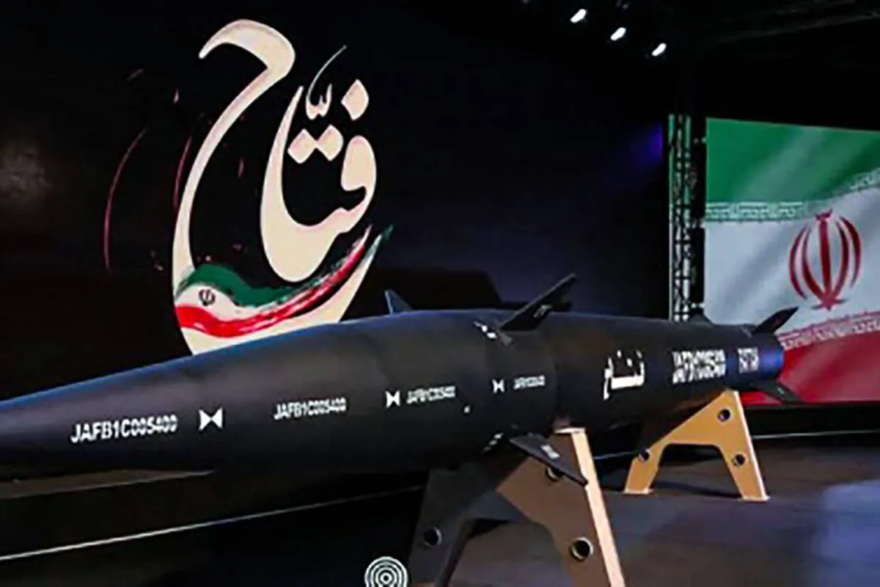 New hypersonic ballistic missile called “Fattah” unveiled by Iran. Handout: West Asia News Agency via Reuters New hypersonic ballistic missile called “Fattah” unveiled by Iran. Handout: West Asia News Agency via Reuters “We build missiles so that we do not suffer from aggression by enemies, and so that…enemies would not even think of an act of aggression against the Islamic Republic,” Raisi said, which comes after repeated warnings from Israel that it reserves the ‘right’ of a preemptive strike on Iran’s alleged nuclear program.
“Iran’s military, defense and missile power creates deterrence, of course, it creates deterrence not only from invasion but also from the thought of invasion,” Raisi added.
At the same unveiling ceremony, the head of the paramilitary Revolutionary Guard’s aerospace program Gen. Amir-Ali Hajizadeh hailed that the new advanced weapon will “usher in a new generation of missiles in Iran,” according state-run IRNA.
Hajizadeh described the Fattah as having a range of up to 870 miles and that “there exists no system that can rival or counter this missile” – as it can also reach speeds of up to Mach 15, according to Iran’s claims.
While Iran released official video showing the alleged hypersonic rocket in flight, other statements suggested it is likely still in the development phase and is not yet be deployable as an active weapon in Iran’s arsenal. Russia, for example, spent years test-firing its hypersonics – but sometimes without success.
Video released by Tehran was filled with a computer-generated graphics portion, raising doubts over whether the country has achieved hypersonic capability…
Gen. Hajizadeh alluded Iranian rocket scientists’ work, saying it “will not end with the construction of this missile,” and further that Iran’s military “will continue on this path so that no enemy even imagines attacking Iran.”
But again, some of the footage purporting to show the Fattah in a test launch and flight appears computer generated…
Yet still, Israel is likely watching these developments very closely, and has long urged the West to act more forcefully not just against Iranian nuclear sites, but against its advanced and ballistic missile program as well. |
|
|
Overview of Christian Anti-SemitismBy Yosef Eisen Although hatred of the Jewish people had been a part of Christianity from its early history, the full virulence was not felt until the end of the 11th Century. During the high Middle Ages, Christian anti-Jewish passion reached its zenith. So strong was the anti-Semitism that many of the attitudes Christians developed regarding Jews clearly led hundreds of years later to the Holocaust – and are still widely felt today. Early Christian Anti-SemitismWith the triumph of the Church during the reign of Constantine, for the first time Jews found themselves in a wholly Christian world. The Church, believing that Judaism was a rival to Christianity, saw many enlightened pagans and Christians attracted to the Jewish faith. Indeed, from the early contact between Jews and Romans hundreds of years before, there had been a stream of converts to Judaism throughout the empire, at times reaching considerable proportions. Unlike the pagan Roman empire, which was generally tolerant in matters of religion, the new Christian Roman Empire claimed to represent the only true faith – meaning that Judaism, and Jews, were an anathema.
In the Fourth Century, Constantine decreed that Jews could not prevent their co-religionists from converting to Christianity, and could not accept converts. Another law affected Jewish slave owners, stipulating that if a Jew circumcised his slave in accordance with Torah law, the slave gained his freedom. Later, the death penalty was prescribed for circumcision. In later centuries, Christian Roman law forbade Jews from holding public office or officers’ rank in the military.
Theologically, the early Church Fathers laid the groundwork for much of subsequent Christian anti-Semitism. St. John of Chrysostom, known as “The Golden Mouth” for his eloquence as a preacher, called the Jews “godless, idolaters, child-murderers, [guilty of] stoning the prophets, and committing ten thousand crimes.” Gregory of Nyssa added that Jews are ”Murderers of the lord, assassins of the prophets, rebels and detesters of G‑d, companions of the devil, [a] race of vipers, darkeners of the mind, Sanhedrin of demons, accursed, detested, enemies of all that is beautiful.”
By Yosef Eisen
|
|
The Bloody CrusadesBy Yosef Eisen https://www.chabad.org/library/article_cdo/aid/2617029/jewish/The-Bloody-Crusades.htm
In general, the Church found Muslim control of Christian holy places in Eretz Israel intolerable, especially when reports came from Jerusalem of harassment of Christians visiting the holy sites. As such, in 1095 Pope Urban II called for an army of Christians to conquer Eretz Israel from its Muslim rulers. Indeed, that Christians viewed Islam as a threat was hardly new. In the Eighth Century, for example, Muslims captured Spain and made inroads into France, before being defeated by Charles Martel’s Frankish army. Slowly, the Christians fought back, beginning the reconquest of Spain. When the legendary Spaniard El Cid retook the important Spanish city of Valencia from the Muslims, the Christian world was greatly encouraged, feeling that the time was ripe to strike at the Muslim world. In addition, the Church saw as its mission spreading Christian rule, which they termed the “Kingdom of G‑d,” over the heathen infidel.
On a more secular level, the possibility of attaining great wealth through conquest was a strong attraction. Northwestern Europe had been devastated by bad harvests in the autumn of 1095, and the crusading impulse rescued many serfs and landowners from desperate economic straits. The population had markedly increased in the previous century, and a spirit of restlessness took hold among the masses. Many people were tantalized by the prospect of adventure, riches, and being part of something great and noble.
Political considerations also played a major role in the Pope calling for a Crusade. There were disputes between the Pope and secular rulers regarding the limits of the Church’s authority. Princes and tribes also often fought among themselves. Therefore, a campaign – a crusade — against a common enemy would unite the warring peoples of Europe under the Pope’s rule, thereby unifying the Eastern and Western Churches.
Although the Pope viewed the Crusades as a campaign led by a professional, well-trained army, the excursion rapidly evolved into a mass movement, with an estimated 100,000 people dropping everything to join. As a proportion of the European population, a comparable response today would be well over a million people “taking the cross,” as it was known. In addition, the Church provided a further incentive by promising that whoever took part in the endeavor would earn a special place in heaven. From that moment, participants were known as Crusaders, after the French word for the crosses affixed to their garments.
The First Crusade started out from France in 1095. In order to remain in the good graces of the Crusaders, French Jews supplied funds and food for the journey. However, when some of the Crusaders reached Germany, their mood changed drastically. Among many Crusaders the feeling grew rapidly that before they attacked the heathens in far-off Palestine, there were infidels much closer to home with whom they should contend.
In May, 1096, in a period of four weeks frenzied bands of Crusaders struck the Jewish communities of Speyer, Worms, Mainz, and Cologne. The Jews were offered the option of conversion to Christianity or death; the vast majority chose the path of Kiddush HaShem, sanctification of G‑d‘s name. Rather than submit to forced conversion, in many cases Jews killed their wives and children, and then themselves. In the words of one of the Kinnos (lamentations) recited on Tisha B’Av: “Who can see it and not cry/As the child is slaughtered, the father recites the Shema/ Has such been seen or heard before?” Estimates of the toll taken on the Jewish communities range from 3,000 to 10,000 deaths.
These heroic martyrs have been immortalized in Jewish history as saintly people who reached the highest spiritual levels. In the Selichos service for the eve of Rosh HaShanah, Jews implore G‑d to remember those who sacrificed their lives: “The bloods of fathers and sons touched, the bloods of merciful women and their children touched, the bloods of brothers and sisters mixed, the bloods of grooms and brides, wise men and wise women, pious men and pious women, elderly men and women, young men and women, all mingled. O land, do not conceal their blood!”
Undaunted, unstoppable, the Crusaders conquered Eretz Israel, reaching Jerusalem in 1099. Once there, they gathered all the Jews of Jerusalem into the central synagogue and set it afire. Other Jews, who had climbed to the roof of Al-Aksa mosque on the Temple Mount, were caught and beheaded. The Crusader leader, Godfrey of Bouillon, wrote to the Pope, “If you want to know what has been done with the enemy found in Jerusalem…our people had their vile blood up to the knees of their horses.” After this victory, the Crusaders retained control of Jerusalem for close to 100 years.
Although compared to later tragedies the loss of Jewish life was relatively small, with the main devastation occurring in but four Rhineland towns, the First Crusade has generally been regarded by Jews as a disaster of epic proportions. The period of counting the Omer, between Pesach and Shavuos, when the massacres occurred, became fixed in Jewish law as a time for mourning. A prayer commemorating the martyrs, Av HaRachamim, was added to the Sabbath morning services and is recited weekly, except on joyous occasions. Several Kinnos were composed remembering these events and became part of the Tisha B’Av service. There are several reasons why the First Crusade has been given such prominence, while other, seemingly far greater tragedies have not:
The four towns destroyed were major Torah centers of Ashkenazic Jewry. Although Jews resettled and rebuilt these communities, and Ashkenazic Torah centers flourished, the greatness of these cities’ martyred scholars was lost forever – a theme that appears prominently in the Kinnos.
The Crusades set a dangerous precedent — the rise of organized, popular, anti-Jewish uprisings. Although both the Pope and the local authorities were generally opposed to the Crusaders’ excesses in Germany, these leaders’ hostility to Jews caused them to remain apathetic to Jewish suffering, thus they generally did not intervene. After the First Crusade, instances of mob persecution occurred regularly. Therefore, the Crusades can be seen as the source for much of subsequent Christian persecution. In keeping with the traditional Jewish viewpoint, that the beginning of a tragedy is noted, the events of the Crusades are commemorated.
As the events of the Crusades and the victory in Jerusalem renewed religious fervor everywhere, among the masses Christian consciousness became greatly heightened. In this new religious climate, traditional anti-Jewish teachings became magnified — and were augmented by new beliefs regarding Jews.
In contrast to previous anti-Jewish outbreaks, in which the primary aim was plunder, the Crusades introduced a new element to Christian anti-Jewish assaults: the ideology of total annihilation.
In the words of the historian Salo Baron: “The trail of blood and smoldering ruins left behind in the Jewish communities from France to Palestine…for the first time brought home to the Jewish people, its foes and friends, the utter instability of the Jewish position in the western world…from the First Crusade on, anti-Jewish persecutions exercised a dangerously contagious appeal, which in periods of great emotional stress degenerated into mass psychosis transcending national boundaries.”
The Second Crusade began in 1146, and struck Jews in France and Germany, including some of the towns destroyed in the First Crusade. A monk named Rudolph told the Crusaders that it was their duty first to kill the Jews at home before proceeding to Palestine. St. Bernard, the Crusade’s official preacher, (assigned that role by the Pope), tried to stop the killings by citing the Church’s traditional view that the Jews must be preserved until the return of Yeshu, when they will supposedly serve as witnesses to their own crimes. Although many Jews were killed, compared to the First Crusade, the loss of life in the Second Crusade was far less extensive.
The Third Crusade, launched in 1189-90, greatly affected the Jews of England. Jews had first arrived in England in 1066 with William the Conqueror from northern France. The new community thus had had a comparatively artificial origin, and possessed a remarkable homogeneity, being composed almost entirely of financiers and their dependents. A type of late medieval Jewry in composition and occupation, the English community was also typical because of its close subjection to royal control.
While the community originated in the main in northern France, of which it was a cultural, linguistic, and economic offshoot, a minority came from Germany, Italy, and Spain – with one or two coming from Russia and the Muslim countries. By the mid-12th Century, Jewish communities were found in most of the greater English cities, Lincoln, Winchester, York, Oxford, Norwich, and Bristol. Nevertheless, the London community was always the most important.
In the course of the 12th Century, however, anti-Jewish feeling began to infect the country. In 1130, London’s Jews were fined the then-enormous sum of 22,000 pounds because one of them had supposedly killed a sick man. The world’s first recorded blood libel took place at Norwich in 1144, and was imitated at Gloucester in 1168. (The horrendous anti-Jewish tactic was then exported outside England.) In 1188, a tax of one-fourth the value of its movable property was levied upon all London Jewry. According to the rough contemporary estimate, the amount raised was 60,000 pounds, compared to 70,000 pounds raised from the general population.
While the English Jewish community was not large, numbering perhaps several thousand at most, its financial importance was out of proportion to its numbers. As they did elsewhere, British Jews specialized in money lending, dispensing vast sums to ordinary people, noblemen, even the Crown. Aaron of Lincoln (c. 1125–1186) was the greatest English capitalist of his day, whose financial aid made possible the completion of several English monasteries, abbeys, and secular buildings. On Aaron’s death, the Exchequer set up a special department to deal with his property and credits.
In 1189, a crowd attacked a delegation of Jews attending the coronation of Richard the Lionheart at Westminster Abbey in London. From there, pogroms broke out in London and spread through many towns. In the city of York, for example, 150 Jews barricaded themselves in a castle known as Clifford’s Tower and valiantly resisted the mob. On the Sabbath before Pesach, the Jews, realizing their situation was hopeless, heeded the advice of their spiritual leader, the Tosafist Rabbi Yom Tov of Joigny, and committed mass suicide. When the frenzied crowd scaled the fortress later that day, they discovered seven Jews who had hid — and massacred them. (In 1981, during excavations for a parking lot, an ancient Jewish cemetery was discovered in York, and the bodies were reburied elsewhere.) The jubilant crowd then burned the records of the considerable debts owed to the Jews. Although there is no reliable source for the custom, Jews traditionally have not lived in York, or even spent a night there, since the massacre. Clifford’s Tower still stands, and a plaque commemorates the horrific event that took place there.
By Yosef Eisen
|
|
Life Under the ChurchBy Yosef Eisen https://www.chabad.org/library/article_cdo/aid/2617030/jewish/Life-Under-the-Church.htm
Anti-Jewish DiscriminationChurch and governmental authorities imposed many restrictions on the Jews. Princes declared the Jews to be slaves of the crown, a punishment that carried a blessing, as the Jews then received royal protection. However, while the Jews’ own personal liberty was preserved, they faced exorbitant taxation. Further, when a Jew died, his estate was seized by the king. In 1215, at the Fourth Lateran Council, Pope Innocent III enacted a number of anti-Jewish decrees, the most famous of which was that Jews must wear distinctive clothing. The purpose of this decree was to prevent friendships, and possibly intermarriage, from occurring between Christians and Jews. The ruling, borrowed from a seventh-century Islamic decree, did not specify what form the distinctive Jewish dress should take. Local authorities required them to wear a so-called badge of shame, a yellow circle symbolizing the Jews’ alleged love of gold. The Nazis later changed this yellow circle to a yellow star. In England, Jews were required to wear the insignia of the Two Luchos, or Tablets of the Law. The Vatican Council also decreed that Jews could not hold any public office that would place them in a position of superiority over Christians, an edict also copied by the Nazis.
Jewish Money LendingNumerous factors caused the association of Jews with this highly unpopular occupation. The consolidation of a continent-wide European identity, a mark of Charlemagne’s reign in the Ninth Century, brought the close of what remained of Jewish citizenship rights dating to Roman antiquity. Immediately, Jewish communities became dependent on the benevolence of princes, bishops, and popes, who all thought of themselves as owning Jews. The rights of the evolving feudal system, such as they were even for peasants, were not extended to Jews.
Over time, with the coming of money-based economies, Jewish communities became necessary as financial centers. As much precious metal had been withdrawn from circulation and converted into ecclesiastical and state regalia, European money sources were drying up. After the First Crusade, the Italian city-states had developed a flourishing international trade with the Muslim countries, further depleting the money supply. The Jews, however, retained supplies of capital from previous successes in international trade. As such, there was not much they could do with it other than lend it to those who needed it. In addition, since Jews were more mobile than Christians, they were a ready source of currency exchange.
As Christian commercial activity expanded in the Middle Ages, Jews were forced out of many occupations they previously engaged in, including crafts, trade, and international commerce. The rise of Christian-only crafts guilds both created a Christian monopoly and eliminated Jewish competition. Further, as Jews could not own or farm land, they were increasingly forced into the one occupation that the Church forbade its adherents — lending money at interest rates high enough both to pay the exorbitant taxes imposed on them and to cover their losses when a debtor defaulted. As such, the Jews obtained a reputation as bloodsuckers, an image that survives to this day. Such circumstances are responsible for the unfortunate and undeserved reputation for exceptional financial expertise and greed that has clung to Jews into modern times.
By Yosef Eisen
|
|

